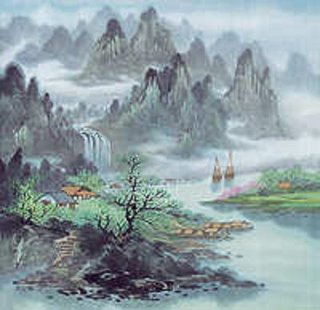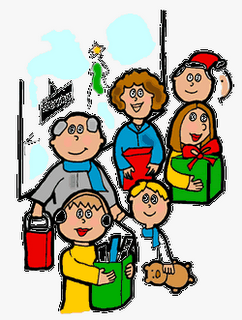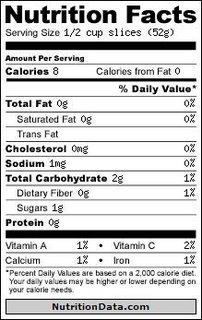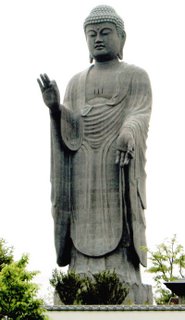
We all know that carrots are good for us, but I had no idea just how good until uncovering some of the research for today's article. The nutrients in carrots have many health benefits and curative properties….read on!
The first set of excerpts are from the book Food: Your Miracle Medicine by Jean Carper, Harper Collins Publishers, 1993, ISBN 0061013307
P. 32: Harvard study: women who ate one additional large carrot or one-half cup of sweet potatoes (or other foods rich in beta carotene) every day slashed their risk of heart attack by 22 percent and stroke by 40 to 70 percent, according to recent Harvard studies.
P. 55: The fiber in a couple of carrots a day can lower cholesterol by 10 to 20 percent.
P. 98: Imagine! Eating carrots five times a week or more could slash your risk of stroke by an astounding two-thirds, or 68 percent, compared with eating carrots but once a month or less! That's the dramatic finding of a recent large-scale Harvard study that tracked nearly 90,000 women nurses for eight years. Spinach was also a particularly potent stroke deterrent.
P. 98-99: More remarkable is new research showing how important it is to have lots of beta carotene and other vitamin A in your bloodstream should you ever suffer a stroke. The vitamin may prevent your death or disability from the stroke according to Belgian researchers at the University of Brussels, who analyzed the blood of 80 patients within 24 hours after they had suffered strokes. They discovered that stroke patients with above-average amounts of vitamin A, including beta carotene, were more apt to survive, to have less neurological damage and to recover completely!
P 249: Marilyn Menkes, Ph.D., of Johns Hopkins University, tracked down donors who in 1974 had given blood samples that had been analyzed for beta carotene content. She discovered that by 1983, ninety-nine of the donors had developed lung cancer. She compared the beta carotene blood levels of the lung cancer victims with those of similar donors free of the cancer.
The message was startling. Those with the least beta carotene in their blood had twice the lung cancer rates of those with the most beta carotene. …Those with the lowest blood beta carotene had quadruple the chances of developing [the] dreaded smoker's cancer as those with the highest blood beta carotene level.
P. 250: Regina Ziegler, Ph.D., of the National Cancer Institute, figured the daily carotene gap separating the high and low lung cancer risks among ex-smoking men to be a mere one-half cup daily of a deep yellow-orange or deep green vegetable. Similarly, researches at the State University of New York at Buffalo calculated that a cancer-protective dose is found in just one carrot a day!
P. 331: Carotene boosts immune defenses against both bacterial and viral infections, as well as cancer.
P. 438-439 …eating a mere carrot a day – or any other beta-carotene-rich fruit of vegetable – cut the odds of macular degeneration (deterioration of the macula, a tiny central part of the retina, which can lead to diminished vision, even blindness) by 40 percent compared with eating such foods less than once a week. Further, the more often the folks ate beta-carotene foods, the more their risk dropped. P. 438-439
P. 476: One medium carrot's worth of beta carotene cuts lung cancer risk in half, even among formerly heavy smokers. High doses of beta carotene, as found in carrots, substantially reduces odds of degenerative eye diseases – cataracts and macular degeneration – as well as chest pain (angina). Carrots' high soluble fiber depresses blood cholesterol, promotes regularity. Note: cooking does not destroy beta carotene; in fact, light cooking can make it easier for the body to absorb.
Here are a few excerpts from the World Carrot Museum, a website based in the U. K. To read the complete article, click Nutrition and Good Health- Part 1
The website includes information about the nutritional value of different varieties and colors of carrots…even purple ones!
(There is a link to Part 2 at the end of this post.)
The power and goodness of carrots
Carrots have many important vitamins and minerals. They are rich in antioxidants Beta Carotene, Alpha Carotene, Phytochemicals and Glutathione, Calcium and Potassium, and vitamins A, B1, B2, C, and E, which are also considered antioxidants, protecting as well as nourishing the skin. They contain a form of calcium easily absorbed by the body. Finally they also contain Copper, Iron, Magnesium, Manganese, Phosphorous, and Sulphur - better than a wonder drug!!
The 3 most important elements are Beta-carotene, Vitamin A, and Phytochemicals.
Beta carotene usually receives most attention when examining carrots. It is one of about 500 similar compounds called carotenoids, which are present in many fruits and vegetables. The body changes beta carotene into vitamin A, which is important in strengthening the immune system, keeping the skin, lungs and intestinal track in order, and promoting healthy cell growth. Beta-carotene is found primarily in dark green, red, yellow, and orange-coloured plants, and is converted by the body into vitamin A and also works on its own.
Vitamin A is a pale yellow primary alcohol derived from carotene. It affects the formation and maintenance of skin, mucous membranes, bones, and teeth, vision and reproduction. In addition dietary Vitamin A, in the form of beta carotene, an antioxidant, may help reduce the risk of certain cancers. However, beta carotene is much more than the precursor for vitamin A.
Only so much beta carotene can be changed into vitamin A, and that which is not changed contributes to boosting the immune system and is also a potent antioxidant.
It is highly recommended that vitamin A be consumed from the diet rather than from supplements (particularly in the case of beta carotene), because vitamin A obtained from a varied diet offers the maximal potential of health benefits that supplements cannot. The richest sources of preformed vitamin A are liver, fish liver oils, milk, milk products, butter, and eggs. Liver is an especially rich source because vitamin A is primarily stored in the liver of animals and humans.
Vitamin A is also found in a variety of dark green and deep orange fruits and vegetables, such as carrots, sweet potatoes, pumpkin, spinach, butternut squash, turnip greens, bok choy, mustard greens, and romaine lettuce. Beta carotene is the most active carotenoid (the red, orange, and yellow pigments) form of vitamin A, but it is inefficiently absorbed and converted to retinol in comparison to vitamin A from animal sources. As you can see Vitamin A intake is essential to human health.
Alpha carotene. Beta carotene is not the only carotenoid. Often overlooked, and also found in carrots, is alpha carotene. According to an article in NCI Cancer Weekly (Nov. 13, 1989), Michiaki Murakoshi, who leads a team of biochemists at Japan's Kyoto Prefectural University of Medicine, contends that alpha carotene may be more powerful than beta carotene in inhibiting processes that may lead to tumor growth. Murakoshi indicates that neuroblastoma (cancer) cells coated with carotenoids experience a drop in N-myc activity compared to untreated cells. N-myc is a gene that codes for cell growth-stimulating proteins and can contribute to cancer formation and growth. Alpha carotene was found to be about ten times more inhibitory toward N-myc activity than beta carotene. Murakoshi concludes that all types of carotenoids should be studied for possible health benefits.
Phytochemicals which are found in vegetables, fruits, and nuts, may reduce the risk of cancer, strokes, hinder the ageing process, balance hormonal metabolism, and have antiviral and antibacterial properties.
A phytochemical is a natural bioactive compound found in plant foods that works with nutrients and dietary fibre to protect against disease. Research suggests that phytochemicals, working together with nutrients found in fruits, vegetables and nuts, may help slow the ageing process and reduce the risk of many diseases, including cancer, heart disease, stroke, high blood pressure, cataracts, osteoporosis, and urinary tract infections. They can have complementary and overlapping mechanisms of action in the body, including antioxidant effects, modulation of detoxification enzymes, stimulation of the immune system, modulation of hormone metabolism, and antibacterial and antiviral effect.
From those 3 elements, carrots benefit our bodies by:
- Boosting immunity (especially among older people).
- Reducing photosensitivity (beta-carotene protects the skin from sun damage).
- Improving symptoms of HIV.
- Easing alcohol withdrawal symptoms.
- Helping to heal minor wounds and injuries.
- Reducing the risk of heart disease.
- Reducing the risk of high blood pressure.
- Cleansing the liver, and when consumed regularly, can help the liver excrete fats and bile.
- Fighting bronchitis.
- Fighting infection (vitamin A keeps cell membranes healthy, making them stronger against disease-causing microorganisms)
- Improving muscle, flesh, and skin health.
- Helping fight aneamia.
- Reducing acne.
- Improving eye health.
Better raw or cooked? The answer is yes to both questions. Read on.
Are Carrots more nutritious in their raw state than when cooked? That's a very good question. Opinions vary. Clearly a raw carrot has more goodness in it when it is raw and therefore you would assume it is the healthiest way to eat it. But unless the carrot is juiced then consumed, the body cannot break down the goodness because of the cellular nature of the carrot.
So in reality, unlike most other vegetables (though not all), carrots are more nutritious when eaten cooked than eaten raw (except when juiced). Because raw carrots have tough cellular walls, the body is able to convert less than 25 per cent of their beta carotene into vitamin A. Cooking, however, partially dissolves cellulose-thickened cell walls, freeing up nutrients by breaking down the cell membranes. So long as the cooked carrots are served as part of a meal that provides some fat the body can absorb more than half of the carotene. Also, it usual for Carrots to be cut into pieces and eaten after boiling or steaming, but done in this way, half the proteins and soluble carbohydrates will be lost so it is more advisable to cook them whole and then cut up.
Experiments show that eating lightly-cooked carrots is much more beneficial than eating raw carrots, which confirms the ancient wisdom in traditional Chinese medicine. Traditional Chinese medicine practitioners have always recommended that their patients eat lightly-cooked carrots in order to get the best nutritional absorption. Recent research by Dr. Xiangdong Wang at Tufts University shows that beta carotene can change in the human body into a substance called retinoic acid, which is widely used to treat cancers.
Cooking also increases antioxidant power
High temperature is usually not the best thing for many of the sensitive compounds that are contained in our food and new research from the University of Arkansas indicates that for carrots, at least, cooking may in fact increase their goodness.
Carrots are one of the best sources of carotene which is a strong antioxidant. But carrots also contain other phenolic compounds that are antioxidants. Many people do not realise that numerous phenolic compounds are located in the skin of fruit and vegetables, many of which are removed by peeling prior to processing.
The Arkansas researchers were studying the effects of thermal processing (cooking) on the antioxidant properties of carrots. The carrots (peeled or non-peeled) were sliced and blanched (2 minutes or 20 minutes), cooked in cans at 250 oC for 75 minutes and then stored for up to 4 weeks. In all cases the antioxidant power of the processed carrots was greater - on average 34% higher - than for raw carrots. During the first week of storage the antioxidant properties continued to climb, before declining over the next 3 weeks in storage. At the end of the 4 weeks the processed carrots still had more oxidative power than raw carrots.
Heating vegetables, either during processing or cooking, is a way of reducing enzyme activity that can lead to undesirable changes in colour, flavour and texture. But the heat can also change compounds found in the raw food into other chemically related compounds. The properties of these new compounds may be different as was reported in this carrot cooking experiment.
Raw vegetables may be popular with many people, but this study shows that at least some processed and canned vegetables can be just as nutritious as raw ones. In areas where fresh produce is not available year round, or where frozen vegetables are not practical, canned vegetables are an ideal option.
(reference: Journal of Agricultural and Food Chemistry 48: 1315-1321 (2000)
The nutritional value of fresh produce does decrease with time. According to the University of Minnesota Extension Service, nearly half of some vitamins may be lost within a few days of harvesting unless fresh produce is quickly cooled or preserved.
Within 1 to 2 weeks, even refrigerated produce will continue to lose half or more of some of its vitamins. The heating process during canning also destroys from one-third to one-half of vitamins A, E, thiamin and riboflavin. Once canned, losses of between 5 percent and 20 percent of these vitamins may occur during a year.
The best advice then is to cook them but not too much this increases the bioavailability of carotenoids in plant foods; and, absorption of vitamin A from the diet is improved when consumed along with some fat in the same meal. The next page continues the nutritional story concentrating on the bodily effects of carrot consumption. Learn how carrots help prevent and lower cancer risk, heart disease and stroke. Also the carrot effect on eyesight and stomach ailments.
Nutrition - part 2 - bodily functions













